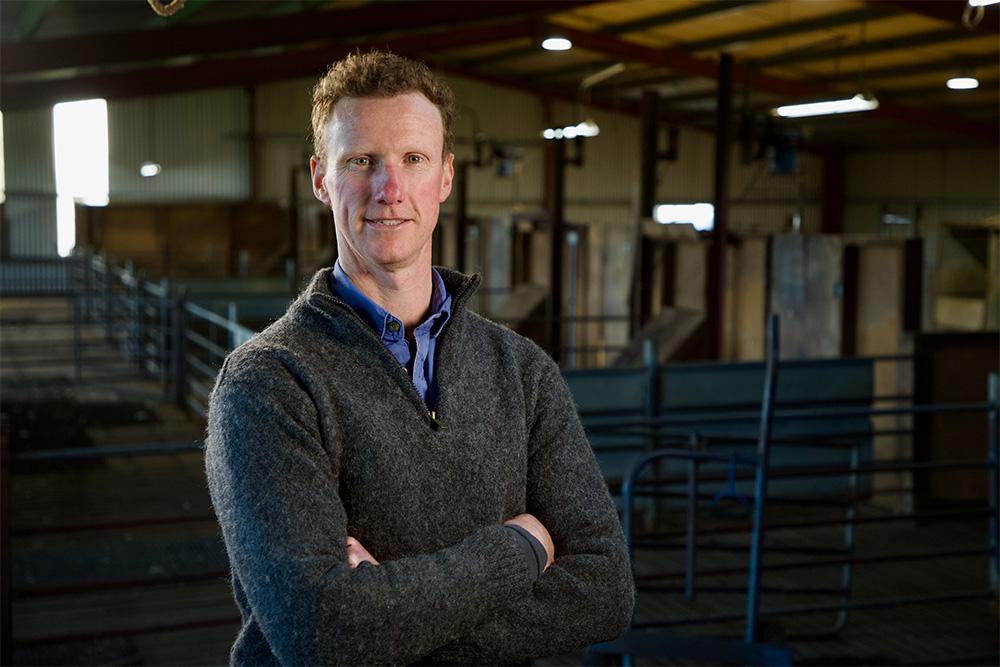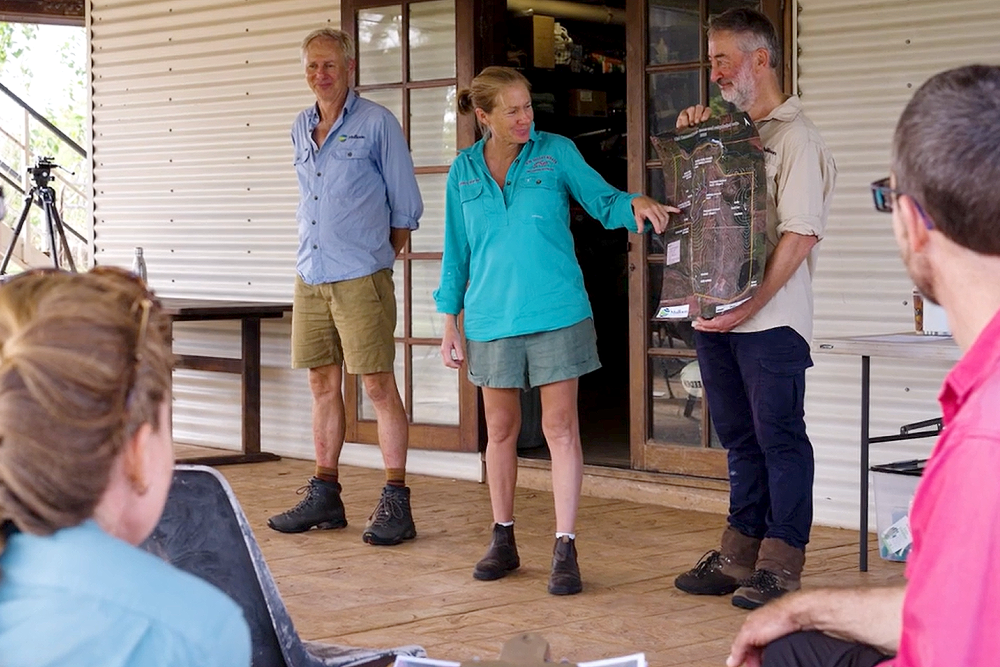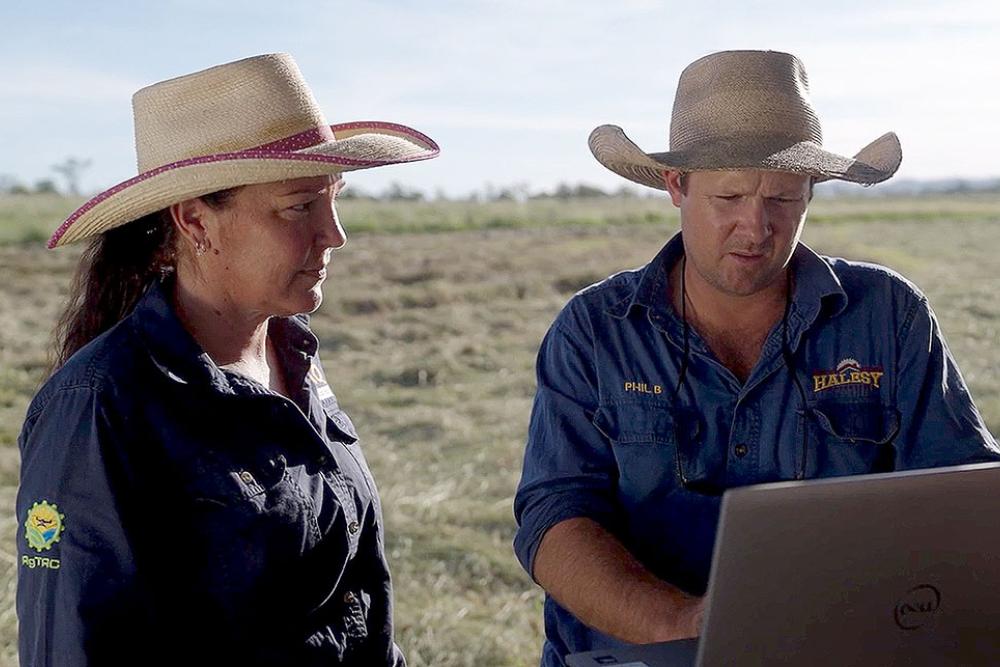Cattle farmers Ian and Julie Firth, along with other producers across the Northern Tablelands of NSW, have built resilience in their grazing enterprises through the Drought Resilient Pasture Landscapes project, delivered by University of New England (UNE) Armidale.
The project, supported by the Future Drought Fund, has fostered a community of learning, bringing producers together in workshops and in the paddock. With the guidance of experts from UNE, Glen Innes Natural Resources Advisory Committee (GLENRAC), Southern New England Landcare (SNEL) and Northern Tablelands Local Land Services, they share knowledge about climate forecasts, hone pasture assessment skills and identify the impacts of their grazing and pasture management.
Julie says one of the big things about drought is there’s so much you can’t control, and the project has helped increase their access to information which alleviates some of this stress.
“By doing this coaching program we've been able to learn how to accurately measure the quality and density of our pastures and that helps us to make much better, more informed decisions,” she says.
One of the key tools used in the project is Ag360, which helps producers incorporate climate forecasts into their feed budgets. Ian says the tool is helping them better assess the effectiveness of past decisions as well as informing future ones.
“We…significantly changed our rotational systems after the last drought…when we were lower stocked, trialling some more intensive rotational systems. Having the monitoring from Ag360 is going to help to determine how that has affected our pastures,” he says.
“There's also the prediction side of things using the BOM rainfall within this program and we're using that to assist us in possibly pulling up…our decision markers on how much pasture and whether we're going to feed.”
Julie values that the project allows producers to experiment and validate their gut feelings with scientific data.
“We're grateful for projects like this one that's funded under the Future Drought Fund because it allows us to experiment and to find out with scientific outcomes what we are doing with our gut, we think is right, this gives us some numbers and information to back that up,” she says.
The Firths aren’t the only family who report feeling better prepared to deal with climate variability thanks to this project. Farmers surveyed after participating in the coaching sessions reported large improvements in confidence, skills and knowledge in pasture assessment, using climate forecasts and feed budgeting, with 100% of producers indicating they would continue utilising these to manage their farm businesses.
See how Ian and Julie Firth have built resilience in their grazing enterprise by using innovative ag tools like Ag360, changing their grazing patterns and adopting support and coaching to improve on their management practices.
The Drought Resilient Pastures Landscapes project, led by the University of New England, received funding from the Australian Government’s Future Drought Fund.
Evidence in action: From better tools to better decisions
Video duration: 5 mins 7 secs
Introduction
This is the transcript of a video case study produced by the Australian Government's Future Drought Fund and the University of New England's Drought Resilient Pasture Landscapes project in the Northern Tablelands of NSW. The video is of Ian and Julie Firth, discussing the benefits of the project in building resilience in their grazing enterprise. This project was funded by the Australian Government's Future Drought Fund – Drought Resilient Soils and Landscapes (DRSL) Grants Program and hosted by the University of New England, with on-ground partners GLENRAC Inc., Southern New England Landcare Ltd. and Northern Tablelands Local Land Services.
Learn more about the Future Drought Fund’s Drought Resilient Soils and Landscapes (DRSL) Grants Program, under the first investment phase of the FDF (2020-2024).
Transcript
[Recording begins]
Video begins [0:00]
Music plays.
Julie Firth [0:11]
I'm Julie Firth. We live on Ardlair which is about 12 km east of Glen Innes.
We have cattle and wagyu cross cattle with Angus. It's about 300 hectares in size and we work it in combination with the other farm that we've got east of here.
It is a classic New England trap property in that the soils are of middling fertility and yeah has been run as an agricultural enterprise since the 1860s.
Ian Firth [0:51]
We also significantly changed our rotational systems after the past last drought. Took the opportunity when we were lower stocked to trial some more intensive rotational systems and having the monitoring from the Ag360 is going to help to determine how well that has affected our pastures and so forth, so that was another thing that we were interested in.
Julie Firth [1:16]
If you have information you can make informed decisions. You can make better decisions and ultimately you can feel as though you are more in control of what's going on on your property during a drought and that overall helps a person's mental health.
One of the big things about drought is this feeling of lack of control, and if you can't control the weather - and we know you can't - there are other factors you can control. And with that information and knowledge that we can get through projects like this we can be better able to manage drought into the future.
So one of the most important things that we've learned from this project is that what you see in the paddock is not necessarily what is actually in the paddock. By doing this coaching program we've been able to learn how to accurately measure the quality and density of our pastures and that helps us to make then much better informed decisions on what's available and what to extend it what implications there are into the future.
If we didn't have that coaching we would potentially be flying blind trying to use a program that we are not sure of what all the assumptions are behind it, so that's been one of the most valuable things I think out of this to be able to learn how to do it properly.
Ian Firth [2:35]
Yeah, and the coaching also helps you fine tune the program.
Julie Firth [2:45]
One of the things that was really good that was so helpful was to have the guys from GLENRAC and from UNE come out to help tutor us in how to pasture measure, how to take that information and put it into the program so that we could get the most accurate results as possible.
Ian Firth [3:04]
Also travelling to other people in other properties in our group and then we were able to have different environments which to do assessments which would help us grade our pastures as well.
I think the combination of having the tutors there on farm and having the other landholders on farm really improved the learning experience.
Julie Firth [3:26]
Ultimately, I think we go and try and attend all the coaching sessions together so that we have knowledge. So, that we can talk confidently to each other about what things mean and the implications.
Ian Firth [3:37]
And we do go over the results with once the data is put in at this stage particularly the rain forecasts and the soil moisture forecasts for our pastures in the future, if we were making decisions coming out of the drought we would also be looking at those pasture growth expectations coming out of drought to make decisions of you know whether we actually buy stock in.
Julie Firth [3:59]
Makes much better discussions when we both know what we're talking about.
Ian Firth [4:04]
There's a prediction side of things using the BOM rainfall within this program, Ag360, and we're using that to assist us in possibly pulling up points where we have to make decisions, our decision markers basically, on how much pasture and whether we're going to feed.
So, it’s decision points we're looking at and also the predictions of where going forward but you know gut's a big thing - you've got to go with gut too.
Julie Firth [4:36]
And that's why we're grateful for projects like this one that's funded under the Future Drought Fund because it allows us to experiment and to find out with scientific outcomes what we are doing with our gut, we think is right, this gives us some numbers and information to back that up.
[Music]
Recording ends [4:55]
A screen displays the text:-
“FUNDING ACKNOWLEDGEMENT: The Drought Resilient Pastures Landscapes project received funding from the Australian Government’s Future Drought Fund. The project is led by the University of New England, who has partnered with GLENRAC, Southern New England Landcare, and Northern Tablelands Local Land Services. You can find out more about the coaching project at glenrac.org.au or snelandcare.org.au”. All mentioned organisations logos are then displayed.



